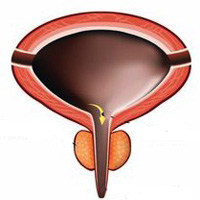Non-invasive diagnosis of under active bladder: A pilot study

Accepted: February 2, 2022
All claims expressed in this article are solely those of the authors and do not necessarily represent those of their affiliated organizations, or those of the publisher, the editors and the reviewers. Any product that may be evaluated in this article or claim that may be made by its manufacturer is not guaranteed or endorsed by the publisher.
Authors
Objective: We assessed the efficacy of voiding efficiency (VE) to distinguish between underactive bladder (UB) and bladder outlet obstruction (BO) without using pressure flow studies (PFS).
Materials and methods: in male patients, uroflowmetry and post-void residual (PVR) urine data and subsequent pressure flow studies (PFS) data were examined retrospectively. Bladder outlet obstruction index (BOI) and bladder contractility index (BCI) were calculated from patients' PFS values. Patients with BCI < 100 and BOI < 40 were grouped as UB group and patients with BCI > 100 and BOI > 40 were grouped as BOO group. VE was computed as a percentage of volume voided compared to the pre-void bladder volume.
Results: In total we examined 93 patients, 44 in UB and 49 in BO group. There was no statistically significant difference between the two groups in relation to Qmax value (p = 0.38). However, total voiding time, time to reach the maximum urinary flow rate and voided volume showed statistically significant difference between the two groups (p < 0.001). Average VE was 63.6 + 2.43% and 46.2 + 2.63%) for UB and BO groups respectively and the difference was statistically significant (p < 0.001). UB can be diagnosed with at least 95% sensitivity and 88% specificity in men over age 80.
Conclusions: Non-invasive uroflowmetry and VE measurements were able to differentiate between UB and BOO patients, presenting with identical clinic features, but different findings of PFS.
How to Cite
PAGEPress has chosen to apply the Creative Commons Attribution NonCommercial 4.0 International License (CC BY-NC 4.0) to all manuscripts to be published.

 https://doi.org/10.4081/aiua.2022.1.51
https://doi.org/10.4081/aiua.2022.1.51




